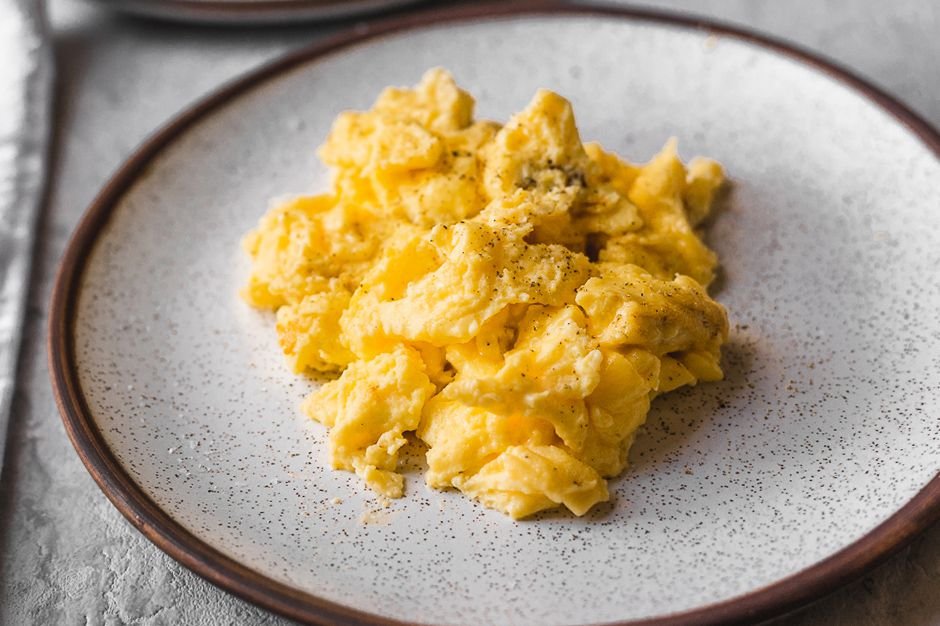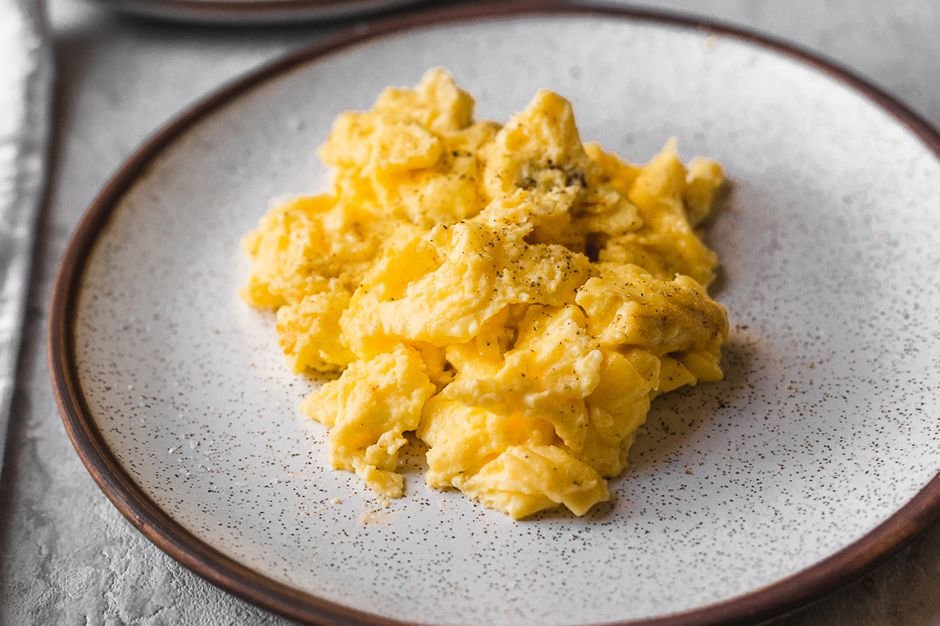[raw]
Whether you enjoy them plain, loaded with cheese, or piled on toast as you head out the door, scrambled eggs are one of the easiest and most satisfying ways to start your day. All you need is a whisk, a hot pan, and, of course, a few eggs to have breakfast ready in minutes.

The Secret To Fluffy Scrambled Eggs
The secret to perfectly fluffy scrambled eggs is to whisk the eggs thoroughly and vigorously before cooking. Whisking incorporates air, producing fluffier scrambled eggs,
These eggs are whisked twice: once to blend them together and again after adding the milk. For the best results, whisk until your wrist is tired! The mixture should be pale yellow and frothy with bubbles.
How To Avoid Overcooked Eggs
Another tip is to turn off the heat before the eggs are all the way cooked. This helps prevent overcooking, which will make your eggs rubbery and dry.
Scrambled eggs also continue cooking for a few moments after transferring them to the plate. This phenomenon is known as residual or “carry-over” cooking, and you want to transfer the eggs to the plate when they’re slightly softer than the way you ultimately want them.
Tips for Making Scrambled Eggs
- White or black pepper works – Finely ground white pepper is traditionally used in French-style scrambled eggs, omelets, and cream sauces because it blends in seamlessly. Black pepper is a fine substitution.
- Sauté ingredients – Additional ingredients, especially those with high moisture content like tomatoes or onions, can disrupt the timing and make your eggs watery. To prevent this, sauté these items separately to cook off the water before adding them to your eggs.
- Everything in its place – Have any ingredients you want to mix into your scrambled eggs, chopped and/or cooked, and ready to go before starting.
- Use a non-stick pan – Make it easy on yourself by using a nonstick sauté pan. Use a heat-resistant silicone spatula to avoid melting or scratching the pan.





